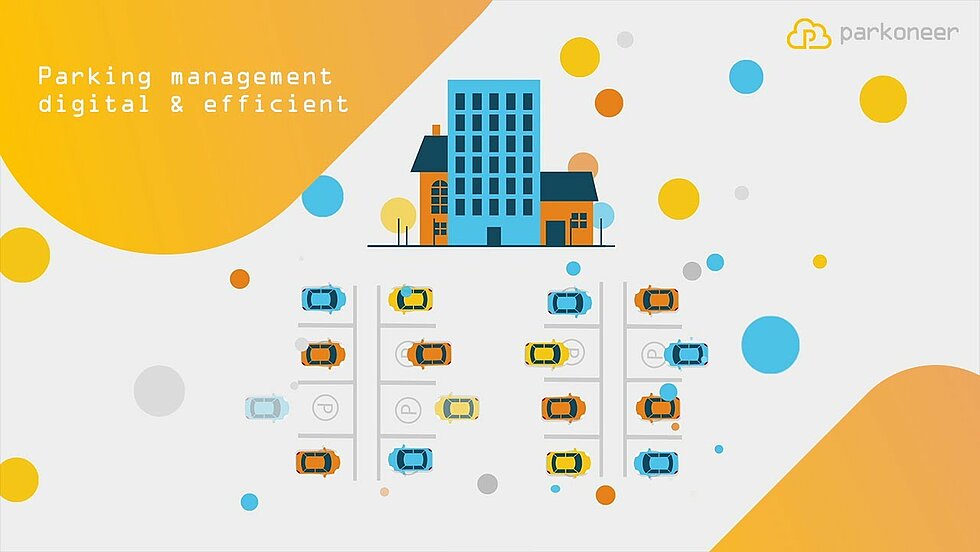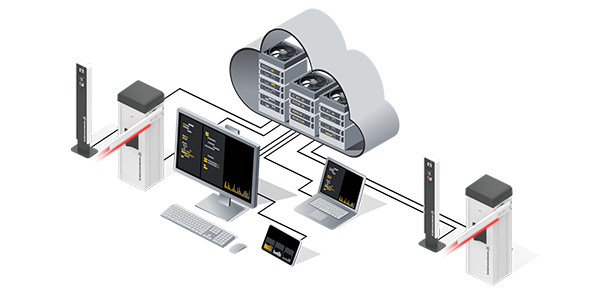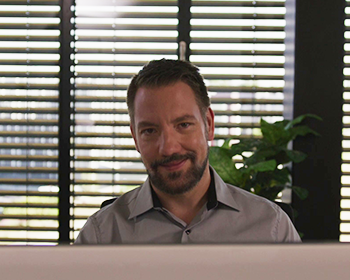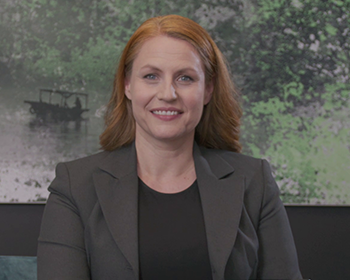

Create location advantages with the help of digital parking management
Corporate real estate can be a key factor for the strategic potential and competitiveness of companies. On the one hand, the ecological footprint of companies can be significantly controlled through this - as we explain in our articles Parking Management as a Building Block of any ESG Strategy and Influence of Parking Management on ESG Criteria - and on the other hand, labor productivity can be increased through optimized Corporate Real Estate Management (CREM). To achieve this, it is necessary to significantly increase the level of digitalization in companies, enabling the management of real estate and related strategic decisions.
And this digitization can already start in the parking lot. Thanks to digital parking space management, companies can use the dynamization of parking spaces to their advantage:
- to create locational advantages by guaranteeing parking spaces for employees and thus ensuring stress-free arrival and departure
- to increase employee satisfaction, because thanks to self-booking, parking and office work can be ideally integrated into one's own mobility behavior
- to make valid decisions about parking space utilization with the help of the knowledge gained about the actual utilization of the parking space
Allocate more permissions for existing parking spaces
Managers of corporate real estate parking areas are often faced with a problem: they cannot issue parking permits to all employees. The simple reason: parking spaces are allocated rigidly and are linked to specific users. If these users are not on site, internal agreements are required as to who may be allowed to park there as an alternative or, in the most common case, the space simply remains empty and unused.
Our parkoneer solution changes this inefficient system by dynamizing the parking space. It allows many more permits to be assigned than parking spaces are available. This works because parking spaces are used multiple times. In particular, the increasing proportion of remote work and the resulting unsteady mobility patterns mean that many employees no longer work in the office every day. Customer appointments, vacations and sick leave all contribute to the dynamic hustle and bustle of parking spaces.
We therefore rely on allocating parking spaces according to actual availability. The fact that employees can book the spaces themselves means that they know in advance whether there are still spaces available in the area when they are at the site. And the parking space managers can use the real-time data to read out on which days and times the parking space is at peak capacity and thus control the allotments and total authorizations issued. In this way, the available space is perfectly used by optimizing utilization.

The all-round carefree package for your parking space
You can consistently create improvements for everyone who comes into contact with parking in your lot. This applies to both the management of the parking area itself and improvements in terms of employee satisfaction.
Reception with open barriers
The daily users of your parking area will be more satisfied and feel valued. This is because the multiple allocation of parking spaces allows for more parking permits, which means that many more people can use the parking area in the first place. As a result, they have guaranteed parking security because they know in advance that they will be able to park, and their arrival is stress-free. What's more, they can integrate parking into their mobility patterns as needed - thanks to self-management.
Office parking becomes child's play
The people who manage the parking area will be delighted with increased efficiency and full transparency over all parking operations. The intuitive usability and simple control of the system make parking management child's play. It no longer requires any physical media to be managed, and all processes are purely digital. This also allows parking utilization to be optimized because real-time data on capacity and utilization is available.
From cost to profit center
Parking areas can be operated more profitably and become a real location advantage. Allocating more parking permits, for example, enables additional revenue, even after business hours and on weekends. All in all, investing in a modern, future-oriented parking management system is an investment above all in employee satisfaction.
Download
5-Minute-Guide





